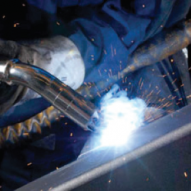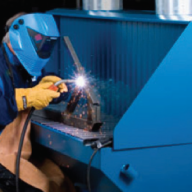An Introduction to LEV
Many welders are exposed unnecessarily to welding fume and gases that can damage their health. The HSE estimates that exposure to welding fume causes more than 150 deaths due to cancer every year.
Exposure to the fumes and gases can also cause other diseases, including:
- an increased susceptibility to pneumonia
- metal fume fever
- chronic obstructive pulmonary disease (COPD), which includes bronchitis and emphysema
- asthma.
One measure that can be used to control the fumes and so minimise the risks to health is local exhaust ventilation – LEV. However, to ensure they are effective:
- the right type of system must be used, matched to the welding process and type of work being carried out
- the systems need to be used correctly, maintained and tested and managed properly.
This fact sheet provides some advice on the design and management of LEV systems to help you control workers’ exposure to welding fume and gases.






